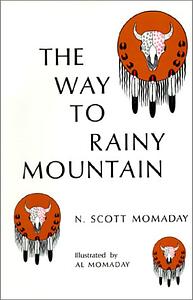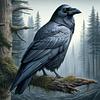Take a photo of a barcode or cover
If you saw the PBS documentary about him, you’ll find a lot of the same stories and personal narratives in this book.
informative
reflective
medium-paced
informative
reflective
sad
medium-paced
emotional
informative
reflective
fast-paced
reflective
fast-paced
This makes me sad because it reinforces a truth easy to ignore: nothing lasts.
Another thread in the story is the role western expansion and US militarism played in the decline of the Kiowa. In one stark moment on July 20, 1890, his grandmother "bore a vision of deicide" when soldiers from Fort Sill made them disperse before they could do their Sundance, which had already been compromised when they couldn't locate a live buffalo.
Due to 1994 amendments to the American Indian Religious Freedom Act, the Kiowa are now able to continue to practice their religion with the sacred use of peyote.
As a reader, I understand what a terrible loss they've suffered but I look for what survives and thrives of the Kiowa because they are still here! It is affirming to remember, too, that the story ends at Rainy Mountain, which is sacred to them, and this is where his grandmother is buried as indicated in the book. Perhaps other family members are interned there as well. I hope that is the case.
I was wondering about the relationships between the illustrations and text and I discovered that his father illustrated the copy of the book I have. Many of the stories are also from him.
One thing I love about this book is that he tells the story of the Kiowa in a way that takes time and care to even begin to understand. It is still full of wonder.
What does it mean to really know something? This is what the quote that ends the section "Closing In" begins to answer:
East of my grandmother’s house the sun rises out of the plain. Once in his life a man ought to
concentrate his mind upon the remembered earth, I believe. He ought to give himself up to a particular landscape in his experience, to look at it from as many angles as he can, to wonder about it, to dwell upon it. He ought to imagine that he touches it with his hands at every season and listens to the sounds that are made upon it. He ought to imagine the creatures there and all the faintest motions of the wind. He ought to recollect the glare of noon and all the colors of the dawn and dusk.
What I wrote under this quote in my notes: HOME?
Another thread in the story is the role western expansion and US militarism played in the decline of the Kiowa. In one stark moment on July 20, 1890, his grandmother "bore a vision of deicide" when soldiers from Fort Sill made them disperse before they could do their Sundance, which had already been compromised when they couldn't locate a live buffalo.
Due to 1994 amendments to the American Indian Religious Freedom Act, the Kiowa are now able to continue to practice their religion with the sacred use of peyote.
As a reader, I understand what a terrible loss they've suffered but I look for what survives and thrives of the Kiowa because they are still here! It is affirming to remember, too, that the story ends at Rainy Mountain, which is sacred to them, and this is where his grandmother is buried as indicated in the book. Perhaps other family members are interned there as well. I hope that is the case.
I was wondering about the relationships between the illustrations and text and I discovered that his father illustrated the copy of the book I have. Many of the stories are also from him.
One thing I love about this book is that he tells the story of the Kiowa in a way that takes time and care to even begin to understand. It is still full of wonder.
What does it mean to really know something? This is what the quote that ends the section "Closing In" begins to answer:
East of my grandmother’s house the sun rises out of the plain. Once in his life a man ought to
concentrate his mind upon the remembered earth, I believe. He ought to give himself up to a particular landscape in his experience, to look at it from as many angles as he can, to wonder about it, to dwell upon it. He ought to imagine that he touches it with his hands at every season and listens to the sounds that are made upon it. He ought to imagine the creatures there and all the faintest motions of the wind. He ought to recollect the glare of noon and all the colors of the dawn and dusk.
What I wrote under this quote in my notes: HOME?
informative
inspiring
mysterious
reflective
fast-paced
What a beautiful little book!! I love that each section has 4 parts - a picture (drawn by the writer's father) which are incredibly beautiful, then 3 sections of text (all in different fonts). The first text is a myth of the Kiowa people (either a story of the gods and creation or perhaps something historical but so distant it has become myth); then the second section is more of a socio-historical interpretation of the Kiowa people; and the third section is a personal story/event from Momaday's life.
Each bit is short but rich and evocative.
A book to hold and treasure.
Each bit is short but rich and evocative.
A book to hold and treasure.
Every year, I teach my students the introduction to this book, but I hadn’t read the full thing before. It’s short and meditative, and left me feeling a strong desire to connect more with this Earth. I don’t really know my ancestors and traditions, but to have a sense of belonging in the natural world is something everyone can have, even if it’s land that wasn’t yours hundreds of years ago. It all keeps turning. I’m here now and will soak it in.
I like the intersection of ancient stories handed down from generation to generation with historical commentary and Momaday's own memories from his childhood.








